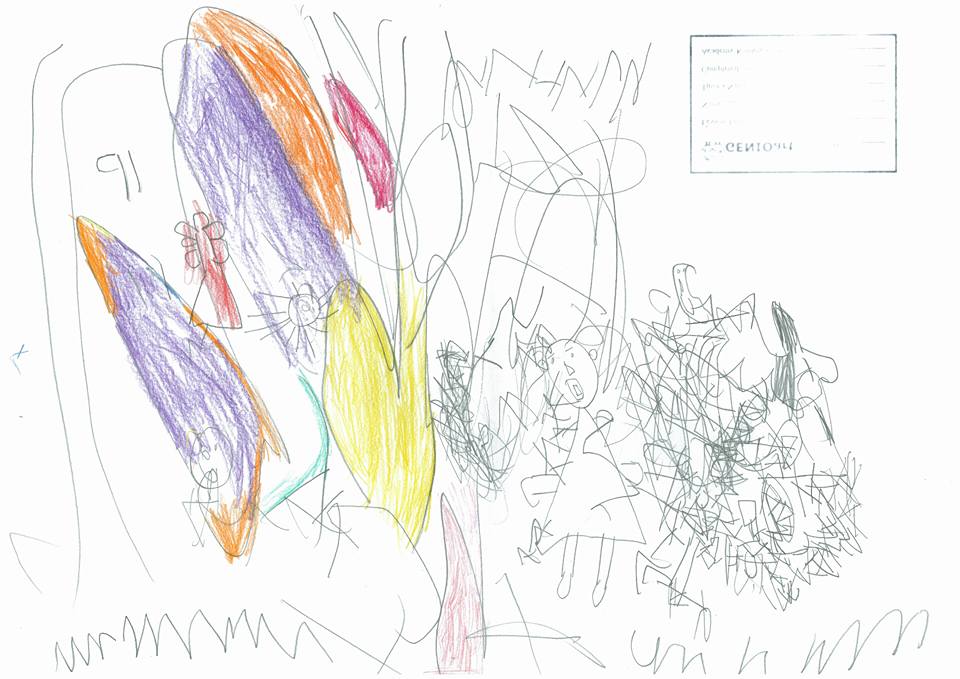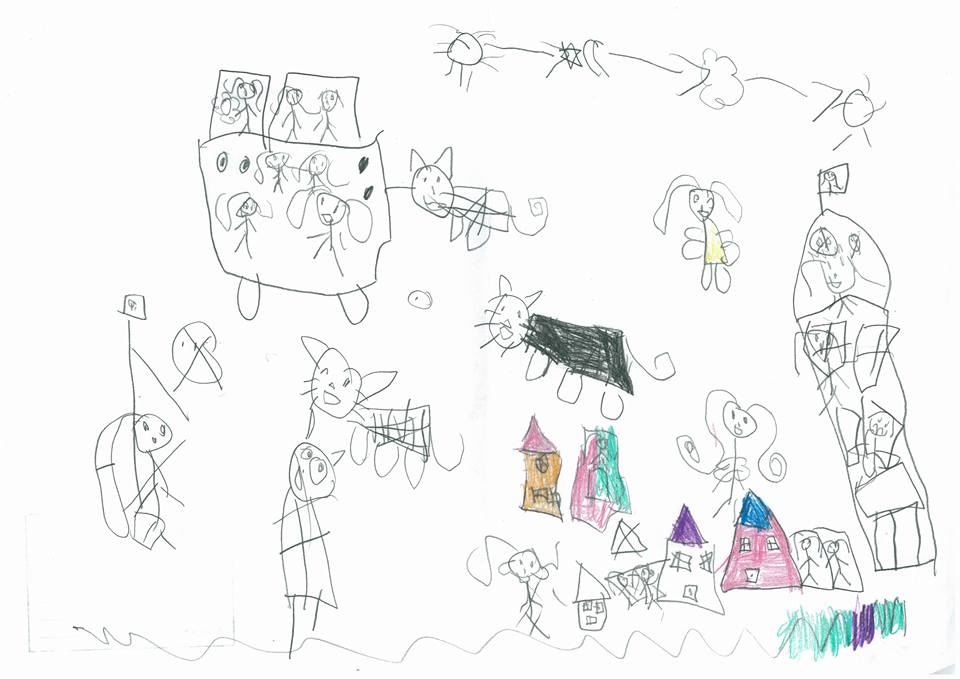
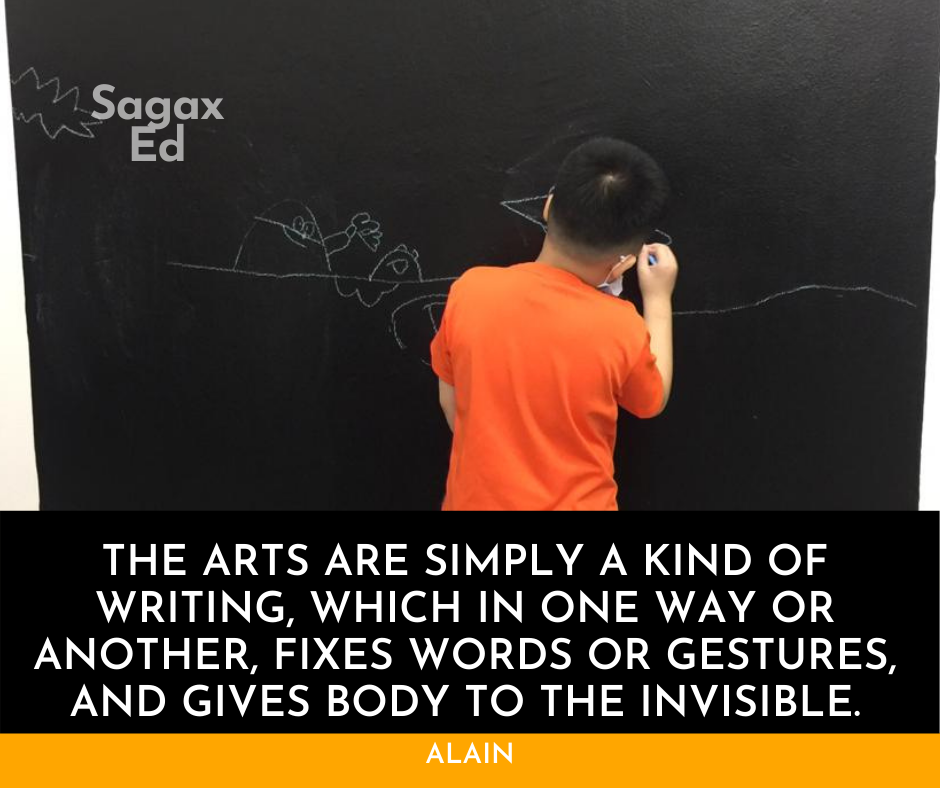
There are various methods for us to communicate such as speech, facial expressions, gestures, writing drawing and touch. Today, we are exploring the use of art as communication tool for children and how we can use art to communicate and engage with our children.
Why children draw?
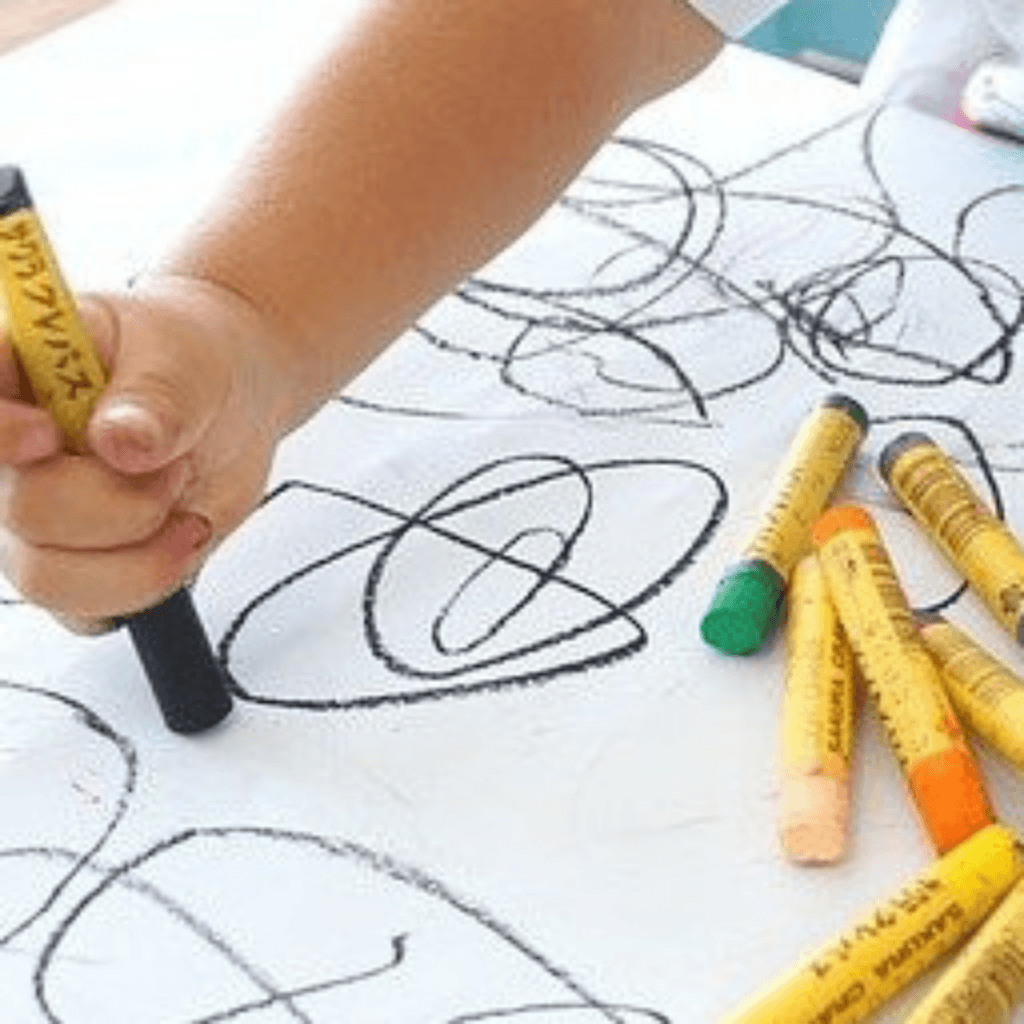
Children starts to scribble as early as 18 months. It is one of the activity they picked up when they learned that they can hold things in their hand (and it creates marks!). Children are curious. They explore their surroundings and their own ability – Walking, running, hopping – when they learn their legs can bring them about. Babble or speak and scream when they realize that the sound they make extract different responses from their audience.
Children develop from scribbling to pre-schema to schema phase as they grow. Kellogg (1970) has identified 20 basic scribbles that children tend to use during their scribbling phase. He has also catalogued 17 page placements toddlers use as scribbles. Children as young as 18 months are making decisions on what color they want to use, where and what they want to scribble.
Skills developed through art
By using different materials such as crayon, chalk, paintbrushes and pencils, it allows children to practice using their fine motor muscles. This will help your child to progress to learn writing, buttoning, tying shoelaces and other controlled movement related activities.
Children are able to explore the cause and effect of using different materials. For example, when a child press harder on a crayon, the line becomes darker or when a child holds the crayon at certain angle, the thickness of the line changes. They also practice their thinking skills by planning out their art pieces and carry out their plan.
Through drawing, children can learn math skill such as size and shapes. Older children can explore further concepts such as counting, sizes to further skills such as comparison and combination of shapes and sizes to produce different objects.
Children pick up language skill when they share their process when producing their artwork. You can create conversations while your children describe their artwork and share their thought process. You can encourage them further by asking open-ended questions to develop their thinking.
The process when producing art creates a wonderful opportunity for social interaction. Children can discuss, interact, share ideas with their partners (children or adult) and they will be able to observe other children (or adult) during the process. They can also learn to appreciate other people’s work and provide feedback on what they like about the artwork and how they would use the idea for their next art piece.
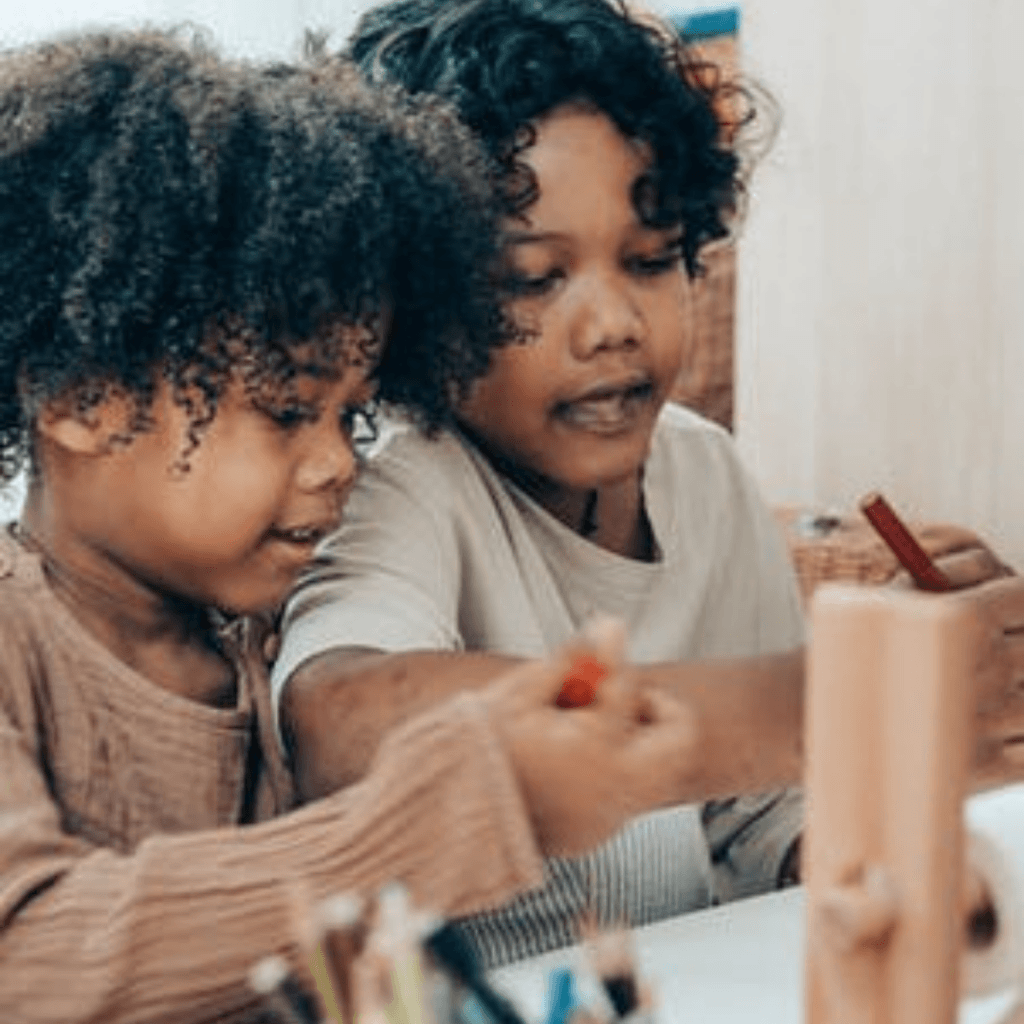
Understanding children’s art
Drawing is an way to communicate as children have yet to learn to express their different feelings and emotions through words. Each of their art piece is unique and gives information about what goes on in their mind. By asking questions such as what is this (pointing to an object) gives opportunity to your child to explain to you what is in their mind rather than making an assumption that a square object means it is a box.
There are studies or experts out there who are able to read your child’s art and able to share what your child is thinking or feeling through their art pieces. I had the experience when an art expert was doing a review session with me on my daughter’s drawing, he pointed out that on occasions, I had reprimanded my child prior to going to school and that has affected her – just from pieces of artwork. The feedback makes me aware of how my action has affected my child and thus, providing the opportunity for me to adjust my behavior.
3 easy ways to engage your child through art
Providing various art material available for children gives them the opportunity to explore and express themselves. Materials can be obtained from stores or even during the walk in the park by picking up random leaves, sticks and fallen flowers. Papers, sand, dough or rice provide various ways to work and developing different sensory experience. Children can learn about textures, lines and shapes and how different art materials produce different outcome.
Working on art pieces provides a great opportunity to strike a conversation with your child. Be curious and ask them, “What is this?” or even to describe what they are currently doing, “I see that you are making lines with red, yellow and green.” You can also encourage them to explore different materials such as chalks, Q-tips, dry pasta such as, “Let’s try with this. Do you think it will be the same as your brush?”
Most importantly, it is crucial to provide space for your child to explore. Be open and not requiring your child to use material in a certain way or even dictating the colors of the drawing to be a specific color such as sky must be blue or sun must be yellow or must color within shapes. By focusing on the process and not the end result, it gives them the opportunity to focus on what they think and not what others would think. Praise them for the effort, hard work and willingness to try, and not how beautiful the art piece is.
Conclusion
Art is a great tool to support a child’s development – physically, emotionally and cognitively. Drawing allows them to express their emotions, practice independence and build their confidence.
As a parent, you can encourage your child to do art when you use the opportunity to review your child’s art and to initiate a conversation and wrap up the day, listening to your child’s story, going into their world and be there for them (and catch up for all the time you are not with them).
PS: If you want to read more about Kellogg’s research, you can find it here.
